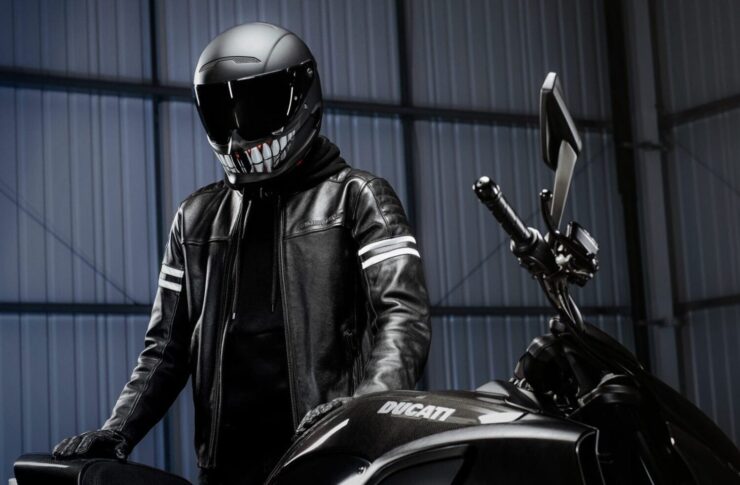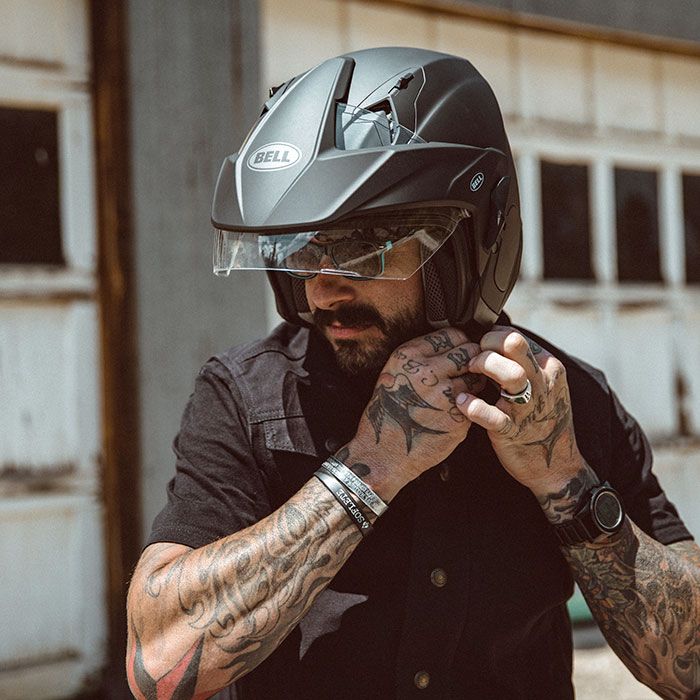Motorcycle windshields may seem like a significant part of a motorcycle’s anatomy, but they play an integral role in shaping a rider’s experience on the road. These transparent screens, also known as windscreens, serve a crucial function: they protect riders from the buffeting effects of wind, bugs, and other road debris. By providing a buffer against these elements, windshields not only enhance safety but also contribute to a more comfortable and enjoyable ride.
Motorcycle windshields come in a variety of types, each designed with specific functionalities and to cater to the needs of different riding styles. A windshield’s design factors include size, shape, material, and adjustability, all of which influence the overall riding experience. It’s not a one-size-fits-all accessory – choosing the right one for your bike requires careful consideration of these characteristics and your riding preferences.
Factors to Consider

There are several factors to keep in mind when selecting the ideal windshield for your motorcycle. First is the rider’s height and seating position. A well-chosen windshield like the one from motorcyclescreens.eu should enable the rider to see over it comfortably while still providing adequate wind protection. This is particularly crucial for longer rides, where the buffeting effects of wind can lead to fatigue.
The second factor is the motorcycle type and design. Different motorcycles come with varying aerodynamics, which should complement optimal performance. For instance, sportbikes with a more aggressive rider posture would benefit from a differently shaped windshield than cruisers, where riders sit in an upright position.
Lastly, consider the riding conditions you typically encounter. Are you mainly a highway rider, or do you prefer windy, twisting roads? Are you an off-road adventurer, or a city commuter? Your riding style and environment significantly impact the kind of windshield that would best suit your needs.
Full-Face

Full-face windshields are one of the most common types found in the motorcycle market. They extend from the top of the headlight to a level just above the rider’s eye-line. They offer the maximum amount of wind and debris protection, making them ideal for touring and long-distance rides.
In addition to providing excellent wind and debris protection, full-face windshields also reduce rider fatigue. By taking the brunt of the wind force, they help maintain stability and reduce the strain on the rider’s neck and shoulders. They are designed to guide the wind over the rider’s helmet, providing a quiet and calm environment for a comfortable ride.
Despite their advantages, full-face windshields may not be suitable for every rider or motorcycle. They can look oversized on smaller bikes and can impede vision in some cases. This brings us back to the importance of considering the rider’s height and the bike’s design when choosing a windscreen.
Half-Face

Half-face windscreens are shorter than their full-face counterparts, covering only half of the rider’s face. These provide less wind protection but offer improved visibility and better air circulation. They’re an excellent choice for city riding, where quick maneuvers and constant attention to the surroundings are essential.
Half-face options give motorcycles a sleek, sporty look and often complement the design of sportbikes and naked bikes. They also provide the rider with a more immersive riding experience, enabling them to feel more connected to their surroundings, which is often desirable in scenic routes.
Remember, though, that half-face windshields do not provide as much wind and debris protection as full-face ones. So if you regularly ride at higher speeds or on highways, a half-face windshield might not be the best choice for you.
Adjustable
If you’re someone whose riding style and conditions vary, adjustable models might be the perfect solution for you. These windshields can be moved up or down, allowing the rider to adjust the level of wind protection based on their immediate needs.
Adjustable screens have a distinct advantage over static ones. In warmer weather or during city commutes, you can lower the windshield for better airflow and visibility. Conversely, during long, high-speed rides or colder weather, you can raise it to provide maximum wind protection.
While adjustable windshields tend to be more expensive, their versatility and adaptability often outweigh the cost. They provide an excellent balance between protection, visibility, and airflow, adapting as per the rider’s requirements.
Off-Road

Off-road varieties are designed to withstand the rigors of unpaved paths and rocky terrains. They’re typically shorter and wider than standard windshields and are built from robust materials to resist impacts from flying debris.
Off-road windshields provide adequate wind protection without compromising visibility. They are designed to be sturdy yet flexible, absorbing the impact from off-road debris without cracking or shattering. They often come with reinforced mounts to ensure they stay secure even under challenging riding conditions.
Despite their rugged construction, off-road windshields also focus on aerodynamics. They are designed to direct airflow in a way that reduces drag and maintains stability, which is essential when navigating off-road paths at higher speeds.
Custom
For those who prioritize style as much as functionality, custom choices can add a unique flair to your ride. They come in various designs, colors, and finishes, allowing riders to make a statement with their motorcycles.
Customs are often built to order, meaning they can be made to perfectly fit your motorcycle and riding style. This bespoke nature also means they can be tailored to complement your bike’s aesthetics, whether it’s a classic cruiser or a flashy sportbike.
However, when opting for a custom windshield, remember that functionality should never be compromised for style. Ensure your custom design meets your wind protection needs and is compatible with your bike’s design and your riding habits.
Maintenance and Cleaning Tips

No matter what type of windshield you choose, regular maintenance and cleaning are essential to keep it in good shape and preserve visibility. Use a soft cloth and a gentle cleaner to clean your windshield regularly. Avoid abrasive materials and harsh chemicals, as they can get scratched or damaged.
Inspect your windscreen regularly for cracks, chips, or signs of wear. Even minor damage can compromise its integrity and effectiveness. If you notice any such issues, it’s best to replace them to ensure your safety and comfort on the road.
When storing your motorcycle, it’s best to cover it or keep it indoors to protect the windshield (and the bike) from the elements. Proper care and maintenance can significantly extend the lifespan of your windshield and ensure it continues to provide reliable performance.
Final Words

Choosing the right windshield for your motorcycle is not just about wind protection—it’s about enhancing your overall riding experience. With the right windshield, you’ll be better equipped to tackle long highways, city streets, or rough off-road terrains. Your choice should be a balance of functionality, aesthetics, and personal preference.
By considering factors like your height, riding style, and the type of your bike, you can find the one that fits your needs perfectly. Remember, it is more than just a screen—it’s a crucial accessory that can make your rides safer, more comfortable, and more enjoyable. So take your time, do your research, and make the right option that will transform your riding experience.

